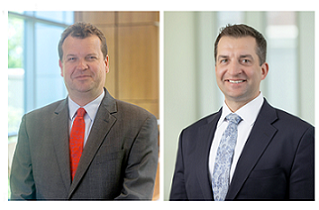How The Lee Company Leveraged Its Experience To Serve New Space Customers

Aviation Week Network hosted an interview with Mathew French, Technical Marketing Manager, Aerospace and Energy and Brian Feuerstein, Business Development & Insides Sales Manager at The Lee Company, a recognized leader in aerospace providing innovative solutions to customers' fluid control problems for over 75 years.

Q AW: What distinguishes New Space from traditional aerospace business?
A Brian Feuerstein: Traditional aerospace companies have existing products, revenue streams, and profit. They follow a philosophy of being deliberate, reducing risk, and getting it right the first time. They carefully evaluate options in close detail and rely on decades of experience, implementing additional verification steps to avoid repeating previous malfunctions.
New Space companies are dependent on generating capital from investors as they try to develop technology to enter the market and begin generating revenue. They’re comfortable giving design authority to talented, yet inexperienced individuals – and accept the risk of the initial system failing in exchange for data.
A Mathew French: In traditional aerospace, production-ready hardware is built and subsequently tested, first as an individual component, then a subsystem, and finally as a complete system. The component is subjected to similar testing which is supported by reams of documentation and engineering hours (potentially taking years).
New Space companies assemble the system and test it (often in weeks). If it fails, the data and analysis will identify the component creating the issue. They will redesign, assemble, test again, and repeat. They believe that moving quickly with a lower-cost system (then upgrading it) will be faster and less expensive overall.
Q AW: How has The Lee Company, already well established in the traditional aerospace world, adapted to serve the New Space market?
A Mathew French: Our “light bulb moment” was when we started treating New Space more like the Formula 1 engineers we work with. We needed to respond faster to technical requests and reduce lead times for development hardware.
We created an internal cross-functional team to address the needs of this market to better understand their distinct system, application, and material compatibility needs and share learning across product types. This effort accelerates the time needed to launch new products intended to meet future requirements. Our deep experience in aerospace lets us serve each customer in the way that best meets their needs.
A Brian Feuerstein: New Space is building hardware for the first time, often without well-defined performance requirements. You must make recommendations with incomplete information. This is outside normal procedure and requires that you embrace the higher level of risk they are willing to accept.
Q AW: What has meeting the needs of the New Space markets entailed for The Lee Company?
A Mathew French: Subcontracted testing tends to have long lead times and an increased risk of set-up issues. Doing everything in-house means we can test and respond quickly. We’ve brought many capabilities in-house (like higher-performing thermal cycle and cryogenic testing). Soon we’ll add new shock and vibration test equipment.
A Brian Feuerstein: A significant concern for this market is production capacity. LEO satellite constellations require hundreds or thousands of satellites and dozens of launches, when space suppliers were accustomed to building for 2-3 satellites and launches per year. As an aircraft supplier, we’re accustomed to these build rates and can easily exceed demand. Combined with our deep history in the space industry, we are uniquely qualified to support the industry with proven hardware and high-volume production capacity.
New Space companies are fighting to achieve performance milestones before funding runs out. They believe deeply in the mission, and you have to keep up with their pace. Communication is critical – detailed technical information is the best way to help lower risk of failures. If their level of success results in additional investments, their teams grow quickly and may have higher turnover. You need to remain in constant contact or your relationship can fade quickly as people and system designs change.
Q AW: Do you see New Space replacing traditional aerospace?
A Brian Feuerstein: New Space companies must take a fast, incremental approach to stay viable unless backed by other revenue streams. Traditional aerospace companies have the advantage of pedigree but may be slower to enact change and are more risk averse. The New Space philosophy isn’t necessarily better... too much risk and they will go bankrupt. Companies have to balance risk and speed. It’s about competition and performance: in every industry, innovation and execution will win. Currently, New Space is dominating.
A Mathew French: New Space executes with products that are less expensive to operate. Time will tell if traditional aerospace can offer a competitive response. When rockets become manned, additional qualification, documentation, and production quality checks are required for certification. They have to know that a system is going to work every time, in every possible combination of temperature and pressure. There can’t be a variance in the performance of the product. Some of the costs that were bypassed will resurface.




